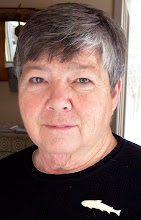Public art leaves an itch in the back of my brain that I can’t quite reach. Today a public art discussion must include art used as placemaking strategy - when it works, when it doesn’t and why.
(Placemaking: purposefully using art or architecture to emboss a particular geographic space in a way so as to instill pride of place, uniqueness and memorability among its visitors and users.)
I’ve served on panels, written articles and even made speeches about this “perfect storm” and still, I confess, I’m no closer to answering some basic questions. Does the practice of placemaking diminish artists’ creativity and art-making? Do artists give up one goal to make another one more attractive - especially when committees, space planners, corporate buyers or patrons are involved? Is public art no more than a product?
If you follow my blog at all, you already know that I hate painted murals…except sometimes. I have no time for those huge paintings that interchangeably deface the world’s dilapidated factory districts. They seem dishonest, generic - without soul. I’d rather leave the aging structures alone, no matter how ungracefully they break apart.
On the other hand, I wrote a while back about the painted oranges that sprang up on building surfaces in Dunedin, Florida, a small town known historically as the place where the Orange Belt Railway began. The murals were painted in secret; spontaneously plotted, the artists remained anonymous. Had the project been planned as a mechanism for placemaking with committees, art judging commissions, etc., would it have worked? Why or why not? (My answer: maybe.)
 |
| An orange mural in Dunedin, Fl, photo: Elizabeth Agte |
This is public art filling a market-driven goal - whether the artists intended that or not. Is this ultimately the unspoken but understood placemaking objective?
The Troutman Chair Company is in Statesville, North Carolina, a small town just north of Charlotte. They’ve been in the business of making classic rocking chairs since 1924.
In 1997, the Charlotte airport installed a temporary photography exhibit called “Porchsitting” and borrowed a few rocking chairs to use as props. It took hardly any time to realize that travelers were drawn to these chairs. Porches, rocking chairs are all part of the southern idiom. Now there are more than 100 Troutman rockers in the Charlotte airport; people sit, rock and watch planes come and go - or other passengers. This is “placemaking.” Is it also public art?
 |
| Troutman Rocking Chairs, Charlotte, N.C. airport |
(How many other airports have you been in that now have rocking chairs without ever questioning the historic significance behind the Charlotte decision? The spreading infection of “homey” rocking chairs from Alaska to Texas turn all airports into friendlier places - at least, that’s the airport management intent.)
Public art can evolve organically (10 painted oranges became hundreds) and placemaking can be an accident of marketing (the first Troutman Chairs used as display in a very public place.)
Next week’s blog posting: art used as public conscious. When does art cross the line? With so much emphasis on public correctness, can art address one event/memory and be both honorable and objectionable simultaneously?

No comments:
Post a Comment